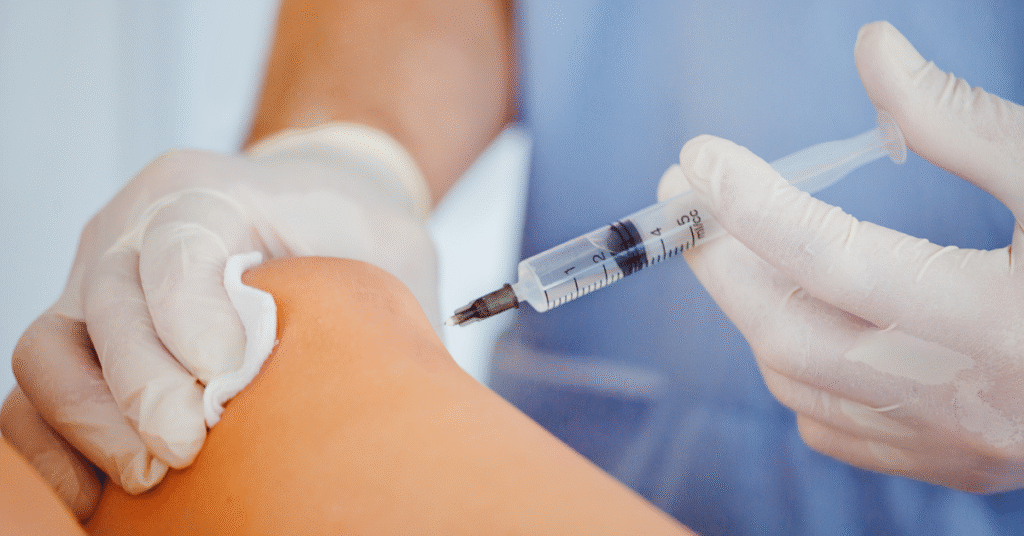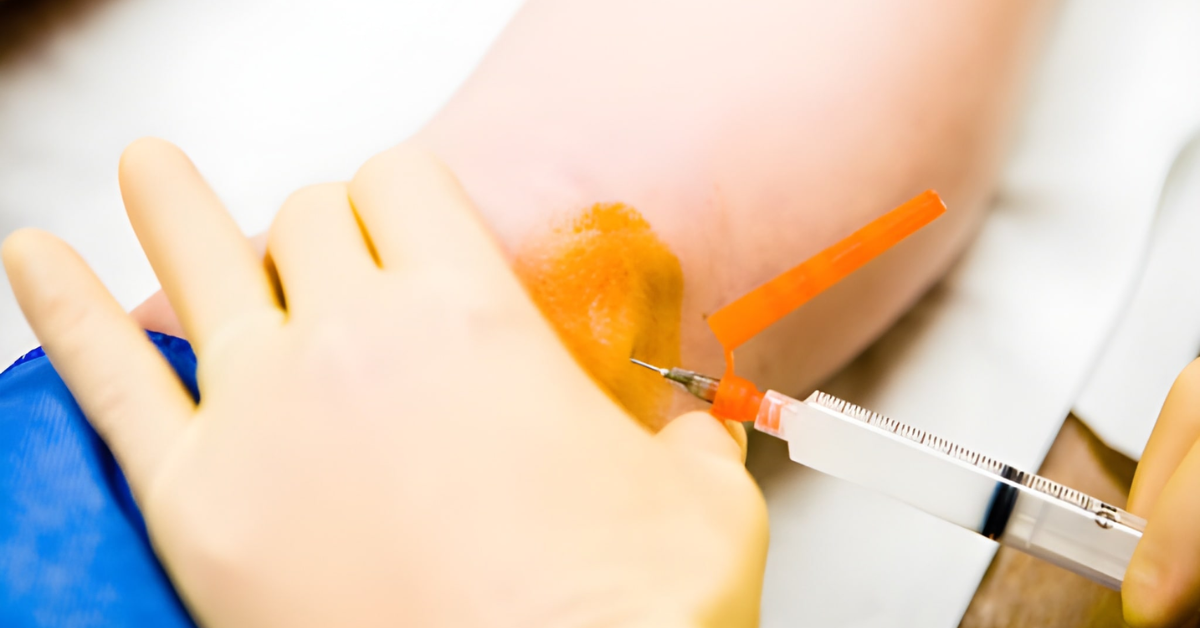Introduction
When pain from an injury or chronic condition won’t go away, cortisone injections are often recommended as a treatment option. These injections deliver powerful anti-inflammatory medication directly into the affected area, offering relief when rest, therapy, and oral medications haven’t been enough.
At Sole Foot and Ankle Valparaiso, we frequently use cortisone injections to help patients with heel pain, arthritis, tendon injuries, and other painful conditions. While they can be very effective, it’s important to understand both the benefits and the possible risks. Here, we’ll break down everything you need to know; plus provide insights from medical experts and real patient experiences.
Key Takeaways
- Cortisone injections reduce inflammation and pain in specific areas like the heel, ankle, or joints.
- Relief may last from several weeks to several months.
- Some people feel improvement within a few days, while others may need a bit longer.
- Rest is usually recommended after the injection to allow the medication to work effectively.
- Risks include temporary pain flare-ups, skin changes, and in rare cases, tendon damage or infection.
What Are Cortisone Injections?
Cortisone is a type of corticosteroid, a strong anti-inflammatory medication. When injected into a painful area; such as the plantar fascia, Achilles tendon region, or ankle joint; it works to reduce swelling and inflammation that cause pain.
These injections are often used for:
- Plantar fasciitis
- Achilles tendinitis
- Arthritis in the foot or ankle
- Bursitis
- Other localized inflammatory conditions
Benefits of Cortisone Injections
Patients often choose cortisone injections because they:
- Provide targeted relief directly where it’s needed
- Work faster than oral anti-inflammatory medications
- Can make physical therapy or rehabilitation more comfortable
- Allow patients to return to daily activities with less pain
Patient perspective:
“I had been struggling with heel pain for months. After my cortisone shot, I was able to walk without wincing the very next week. It gave me the relief I needed to finally start therapy exercises.” – Valparaiso patient
Risks and Side Effects
Like any medical treatment, cortisone injections come with risks. While most are mild and temporary, it’s important to know what to expect:
- Pain or soreness at the injection site (sometimes called a cortisone flare)
- Skin thinning or lightening near the injection area
- Elevated blood sugar levels (temporary, but important for patients with diabetes)
- Rare but serious risks: infection, tendon rupture, or joint damage with repeated injections
Most podiatrists, including Dr. Minhas in Valparaiso, limit cortisone injections to a few times per year in the same area to reduce these risks.

How Long Does It Take for a Cortisone Injection to Work?
The timeline for relief can vary:
- Some patients feel better within 24–48 hours
- Others notice improvement after 3–7 days
- Occasionally, it may take up to two weeks for the full effect
During the first day or two, some people may actually feel increased soreness before the medication kicks in.
How Long Does a Cortisone Injection Last?
Relief can last anywhere from:
- Several weeks (in mild cases)
- Several months (in chronic but stable conditions)
For some patients, one injection is enough to manage symptoms. Others may need additional treatments or alternative therapies if pain returns.
Do You Need to Rest After a Cortisone Injection?
Yes; most doctors recommend resting the injected area for at least 24–48 hours. Avoid intense activity like running, jumping, or heavy lifting during this time. Light walking is usually fine, but overusing the joint too soon may limit the effectiveness of the treatment.
Expert Insight
Dr. Minhas explains:
“Cortisone injections can be an excellent tool, but they’re not a cure-all. I always pair them with a long-term treatment plan—like stretching, orthotics, or therapy—so patients don’t just mask the pain, but actually heal.”
Patient Experiences
- Runner with plantar fasciitis: “The shot helped me get through marathon training, but my doctor also had me change shoes and add stretches. That combination really made the difference.”
- Patient with ankle arthritis: “I get relief for about three months at a time. It’s not permanent, but it allows me to stay active.”
A Note from Sole Foot and Ankle
If heel pain, tendon injuries, or arthritis are interfering with your daily life, a cortisone injection may provide the relief you’ve been searching for. At Sole Foot and Ankle in Valparaiso, Dr. Minhas combines advanced treatment options with a personalized care plan tailored to your needs.
Ready to explore your options? Schedule an appointment with our podiatrist in Valparaiso today and find out if a cortisone injection is right for you.
Frequently Asked Questions (FAQs)
How long does a cortisone injection take to work?
Relief often starts within a few days, though some patients may need up to two weeks to feel the full effect.
How long does a cortisone injection last?
Pain relief can last anywhere from several weeks to several months, depending on the condition and patient.
Do I need to rest after a cortisone injection?
Yes. Most patients are advised to rest for 24–48 hours and avoid heavy physical activity during this time.
Can cortisone injections be repeated?
Yes, but they are usually limited to 3–4 times per year in the same area to avoid long-term side effects.
Are cortisone injections safe for diabetics?
They can raise blood sugar temporarily, so diabetic patients should monitor levels closely and consult with their doctor before the procedure.



